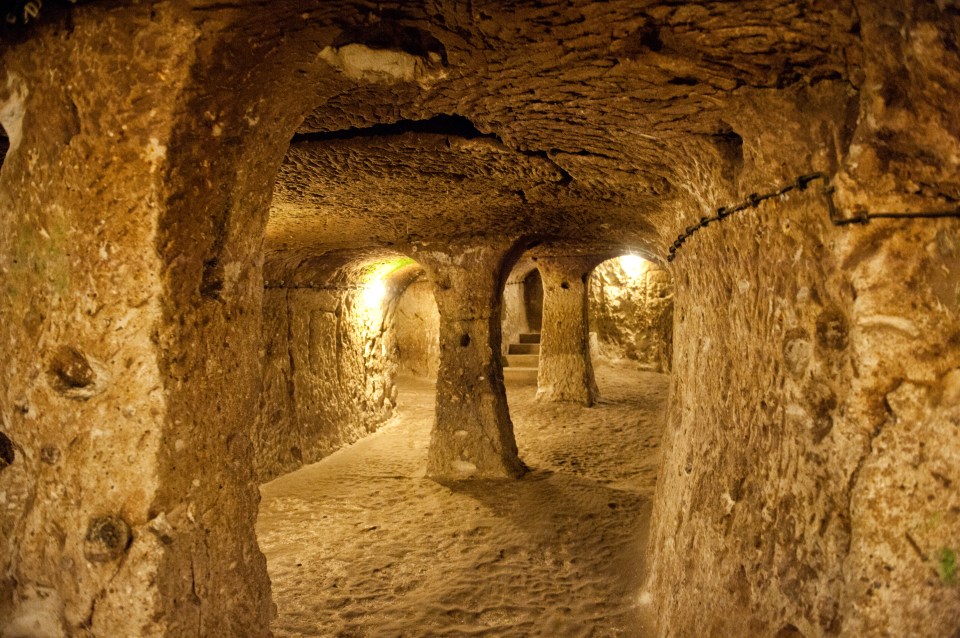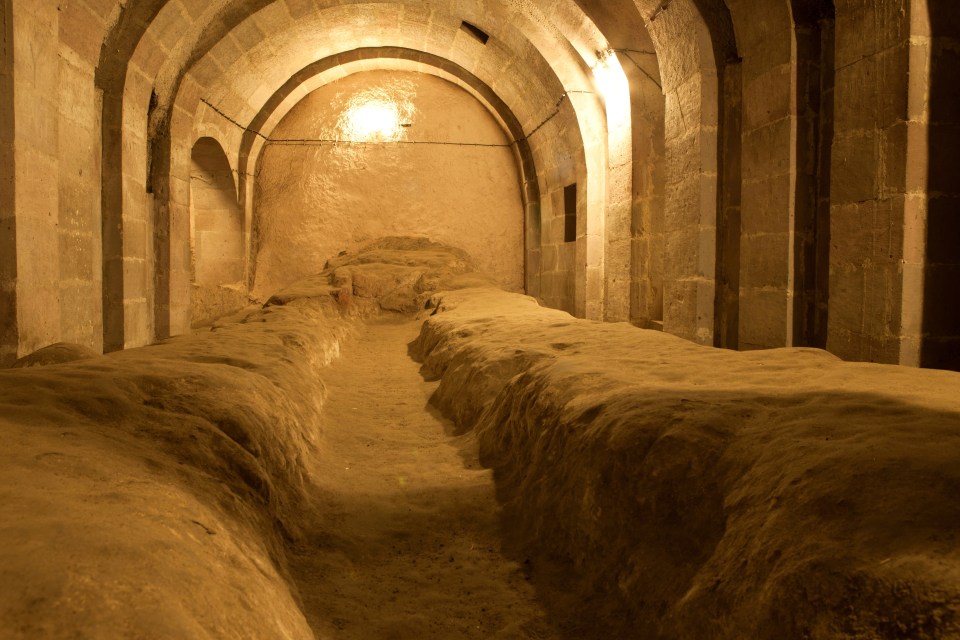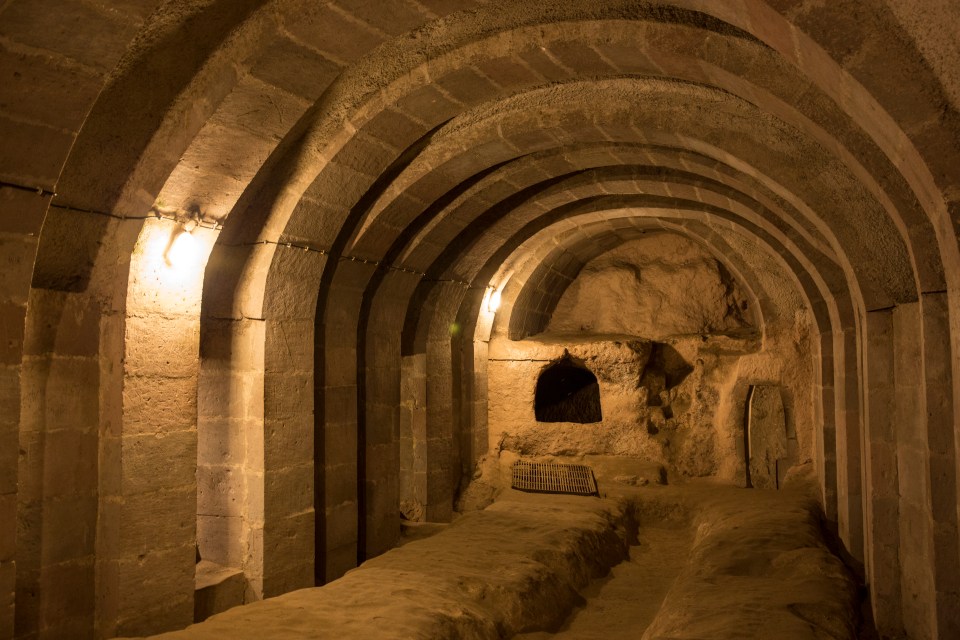
A HOMEOWNER accidentally discovered a secret underground city when renovating the basement of his house.
A man in the Turkish town of Derinkuyu certainly got more than he bargained for when taking a sledgehammer to a wall in his basement.
With the sole intention of remodelling the bottom floor of his home, he instead opened up a gateway into the past that would have significant archaeological importance.
In 1963, the anonymous man became sick of losing his chickens after they'd disappear between small crevices in the wall of his basement.
After tearing down one of the walls in the hope of finding answers of their whereabouts, he discovered a secret room.
The resident soon discovered a tunnel that would lead to connecting halls and chambers in what turned out to be a huge underground complex.
This mysterious labyrinth turned out to be the hidden underground city of Derinkuyu.
It became abandoned by its inhabitants and undiscovered until the homeowner who lived above it knocked down his basement wall.
Excavation began immediately and soon a tangled network of underground dwellings, dry food storage, cattle stables, schools, wineries and even a chapel were found.
The anonymous Turk had found a vast subterranean city, up to 18 stories and 280 feet deep and large enough to house 20,000 people.
Most read in The Sun
Located in the Nevsehir province near the Turkish city of Cappadocia, this ancient city was constructed sometime between the 12th and 15th centuries.
It was carved out soft volcanic rock but this made cave-ins a real risk.
As a result, large supporting pillars were installed and this ensured none of the floors ever collapsed.
Living above the ancient city is up to 600 properties, which all turned out to have secret entrances to Derinkuyu.
However, all the entrances are obscured with a variety of ingenious objects, along with the ventilation shafts that filtered in oxygen.
After massive stone doors that close from the inside were found, it prompted questions as to who these people were trying to keep out.
Nonetheless, it is believed that the elaborate tunnels and chambers of the underground city were built to keep the citizens safe during invasions.
One theory is that it was inhabited by the Hitties as far back as 1600 BCE to hide from Phrygians.
But some historians and archaeologists claim that the Phrygian people were the original constructors.
Possessing the skills to create such an underground complex, they were considered as the greatest builders of the iron age.
The tunnel system was deliberately narrow so as to force enemy invaders to crawl through them one at a time.
Eventually, the chambers open into huge rooms that could have housed tens of thousands of people.
The upper levels, which were the best ventilated, were used as living and sleeping quarters.
The lower levels were mainly used for storage, but they also contained a dungeon.
At the lowest level, the rooms are near enough to an underground river that the whole city had access to fresh drinking water.
According to Andrea De Giorgi, associate professor of classical studies at Florida State University, there was clear evidence of wineries.
He told the BBC: "The evidence for winemaking is grounded in the presence of cellars, vats for pressing and amphoras [tall, two-handled jars with a narrow neck]."
In 1985, the underground city was added to the Unesco World Heritage list.
Read More on The US Sun
It is now one of Cappadocia’s biggest tourist attractions - meaning it no longer counts as an undiscovered world.
For just 60 Turkish lira (£2.80), you can visit the site and experience what life was like underground.















